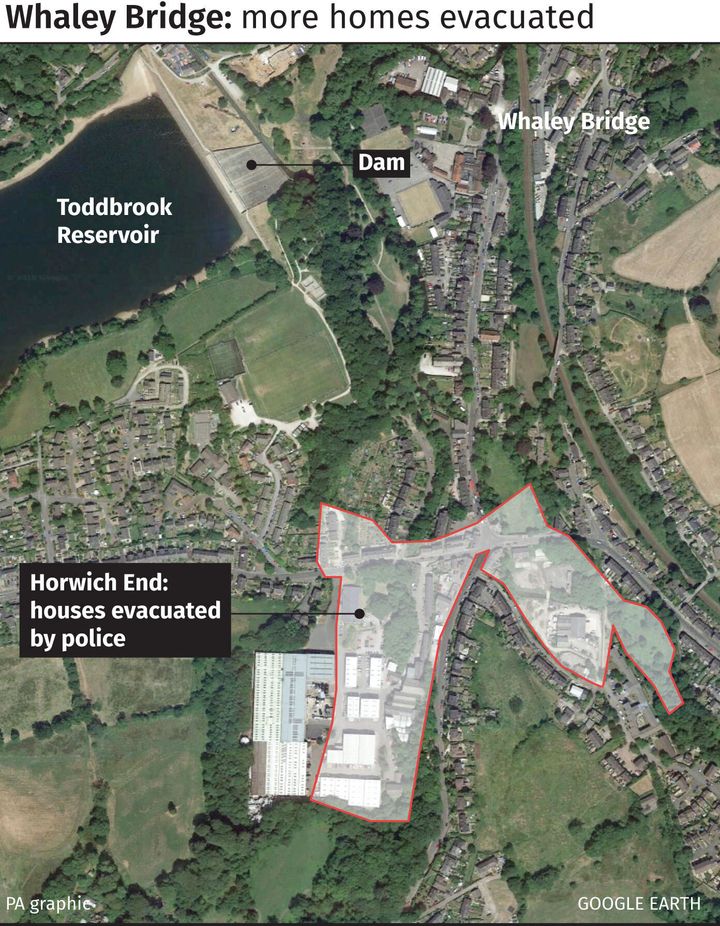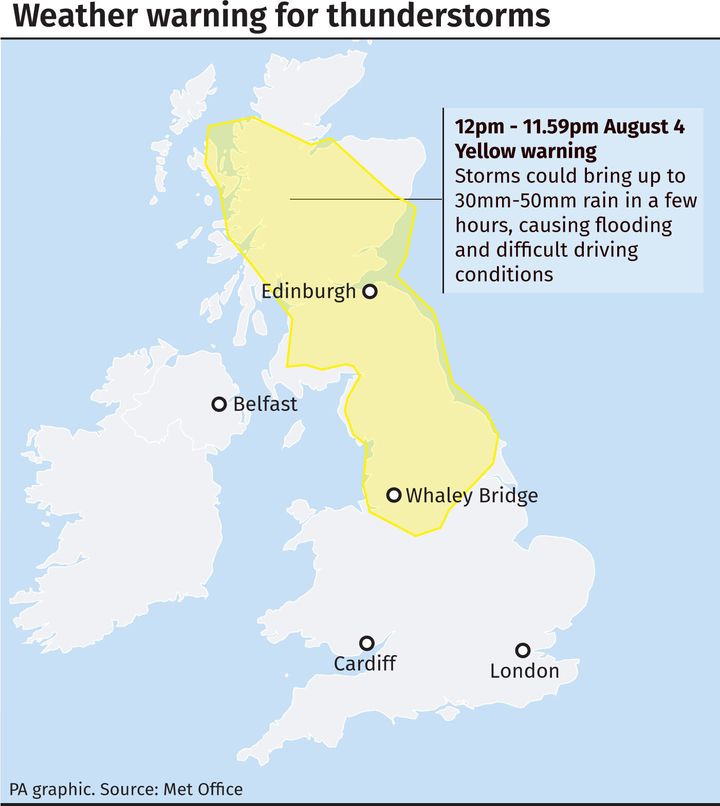
Thirty-one people refusing to leave a Derbyshire town where it is feared a damaged dam could burst have been warned they are are putting their own lives and those of the emergency services at risk.
A senior officer said there could be “catastrophic” consequences if the dam at Toddbrook Reservoir collapses and there are people within the evacuation zone.
A “small number” of people who were initially evacuated have since returned to their homes in Whaley Bridge, during a brief period when police allowed them to do so to collect vital items, but then failed to come back outside the cordon.
Residents of 22 homes, thought to be a mix of those who have gone back to their properties and those who never left following the first evacuations on Thursday, are now refusing to leave despite police warning of a “very high” threat to life.
Deputy chief constable Rachel Swann told a residents meeting on Sunday evening that, as a result, the decision was taken to stop people returning to their homes to pick up essentials.
She said: “We’ve not evacuated this for no reason.
“We’ve evacuated this because there is real prospect the dam could fail and if it fails it is catastrophic. People would die if they if they were in that evacuation zone.
“So those people who are remain in that zone at putting their lives at risk.
“They are also putting the lives of the responders, primarily the police, at risk because we have to keep going in and speaking to them and asking them to leave.”
More than 1,500 people have been evacuated from the town since Thursday.
Water levels at the reservoir have now been reduced by more than 3.5 metres and pumps are continuing to remove water at a rate of around 10cm an hour, police said.

But the situation at the 180-year-old structure remains “critical” and the threat to life “very high”, the force has said.
Forecasters had warned of the potential for up to 40mm of rain to fall in just an hour or two on Sunday afternoon but the feared bad weather had not arrived by early evening.
Police said once emergency workers reach and maintain a level of water on the reservoir that allows engineers to look closely at the damage to the wall, a decision could be made on residents being able to return to the area.
Derbyshire chief fire officer Terry McDermott told the meeting in Chapel-en-le-Frith that a seven-day estimate for how long people would be out of their homes was a “worst case scenario”.
He said specialist engineers have monitored the dam wall 24 hours a day with lasers and are reassured by their assessment.
He said: “There has been no significant deflection in the dam wall according to the feedback we’ve had so far, which gives us some reassurance.”
He explained that the sluice channel around the reservoir was “coping well” with both the water being pumped out by 22 pumps and the inflow to the lake which has been blocked off by Chinook drops.
Six rescue boats have been deployed in the region in case the dam bursts.
An RAF Chinook has dropped more than 400 sandbags, and around 150 firefighters have been using high-volume pumps to remove excess water from the reservoir.
The dam wall has been packed with 530 tonnes of aggregate which is being cemented into place to reinforce the structural integrity of the spillway, police said.

Boris Johnson, who visited the area on Friday promised that the damaged reservoir would have a “major rebuild” as he met locals, and Environment Secretary Theresa Villiers, who visited a day later, paid tribute to the “patience and fortitude” of residents as well as thanking all those working to repair the dam.
The reservoir is on the north-west edge of the Peak District National Park and was built in 1831, according to experts, although the Environment Agency records it as being built in 1840-41.